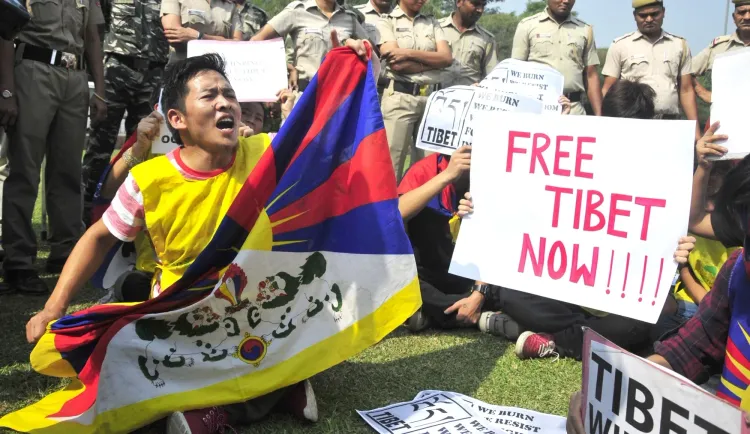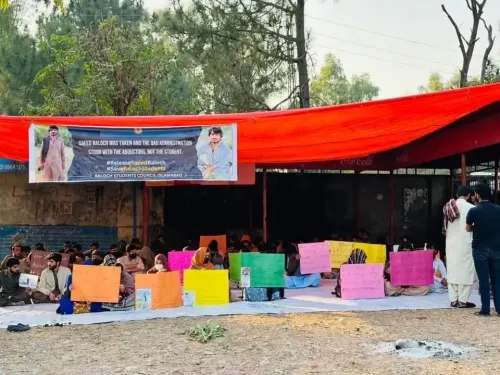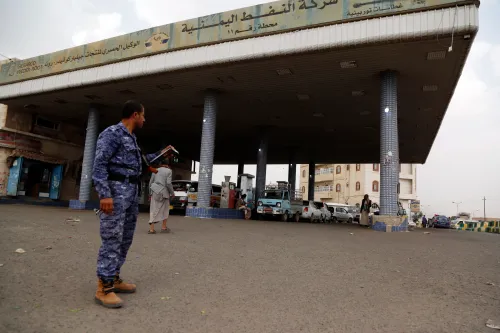Is Tibet Unbroken After 75 Years of Siege?

Synopsis
Key Takeaways
- Tibet has endured 75 years of occupation since the 1950 invasion.
- Chinese policies have led to cultural erasure and the systematic oppression of Tibetan identity.
- Nearly one million Tibetan children are currently in state boarding schools, far from their roots.
- The Third Pole is under threat due to militarization and dam projects.
- The Tibetan diaspora continues to advocate for awareness and justice worldwide.
Beijing, Oct 8 (NationPress) Seventy-five years following the "Chinese invasion", Tibet endures as a land under siege yet unbroken, as detailed in a report released on Wednesday. Tibetans globally commemorated the events of October 7, 1950, when the People's Liberation Army (PLA) of China invaded Tibet's eastern province of Kham, signaling the onset of occupation rather than liberation.
"The mountains of Tibet trembled as eighty thousand Chinese soldiers inundated the plateau like a shadow, overwhelming the 8,000-strong Tibetan army that stood to defend their homeland. It marked the day when an ancient, peaceful civilization faced invasion, silence, and scars," the Tibet Rights Collective report elaborated.
The report noted that when the Seventeen-Point Agreement was signed in 1951 "under duress," Tibet was promised autonomy, religious freedom, and dignity.
"China vowed peace but delivered chains. Over the ensuing decades, more than 6,000 monasteries were obliterated, sacred texts incinerated, monks imprisoned, and the divine reduced to ashes. The world remained silent, yet the mountains have not forgotten," the advocacy group's report stated.
"Currently, nearly one million Tibetan children are confined in Chinese state-run boarding schools, distanced from their families, monasteries, and mountains," it added.
According to the report, within these sterile classrooms, the Mandarin language supplanted Tibetan, and party slogans replaced compassion. Children grow up unable to communicate with their grandparents, becoming estranged from their own identities.
Citing a 2025 report, 'Weaponizing Big Data: Decoding China’s Digital Surveillance in Tibet', it detailed how biometric data, DNA, and facial recognition facilitate Beijing’s predictive policing system — suppressing dissent even before it is articulated.
"The United Nations has labeled this as cultural erasure. The goal is clear: to cultivate a generation that views Tibet not as home, but merely as a ‘region of China.’ This is not education; it is assimilation. It represents the gradual erasure of a civilization, one child at a time," the report emphasized.
The report highlighted that the Tibetan Plateau, often referred to as the Third Pole, is succumbing to the pressures of militarization and exploitation. Furthermore, it indicated that China’s dam initiatives on the Yarlung Tsangpo (Brahmaputra) jeopardize the vital water resources of South and Southeast Asia.
“From India to Europe and the United States, the Tibetan diaspora consistently reminds the world: You may occupy a nation, but not its conscience,” the report stated.
“Seventy-five years after the invasion, Tibet remains besieged yet unbroken. Beijing controls the territory, but the spirit of Tibet belongs to those who refuse to forget,” it concluded.









